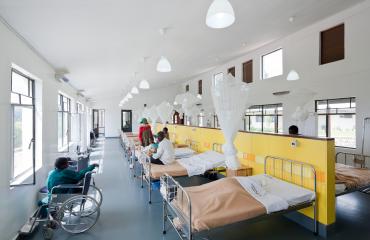The Curry Stone Design Prize awards talented designers who “harness their ingenuity and craft for social good.” This year, in honor of the fifth anniversary of the Prize, the five winners share the award equally, each recognized with $25,000 for their work as social design pioneers. Here they are:
Increasing civic participation
The Center for Urban Pedagogy (CUP) collaborates with teachers and students, policy experts and community advocates, and artists and designers to visually communicate complex urban-planning processes and policy-making decisions. In CUP’s hands a topic as dry and alienating as voter redistricting is distilled down into a colorful, accessible foldout brochure that becomes a source of empowerment.
Jeanne van Heeswijk is an artist who facilitates the creation of lively and diversified public spaces, typically from abandoned or derelict sites. Her socially engaged art practice generates new forms of encounter while challenging bureaucratic conventions and acquired rules.
Design for the grassroots
Liter of Light created by Illac Diaz, converts plastic soda bottles into a cheap daytime lighting source for those living in informal settlements in the Phillippines. Its focus is on teaching a community how to manufacture and install the solar bottle bulbs, with the end goal of creating green microbusinesses.
A market and moral imperative
Model of Architecture Serving Society–aka MASS Design–is a Boston-based architecture firm that has created a niche practice in designing healthcare facilities in resource-limited settings, primarily in countries emerging from crisis. MASS brings high-quality design and implementation to where it is most needed, and at the same time brings other disciplines into architectural work (its core team includes public health professionals with no background in design).
Context is everything
Riwaq Centre for Architectural Conservation has spent more than two decades documenting Palestinian heritage and culture through restoration of the built environment. RIWAQ sees architectural restoration as a social and economic incubator; the projects it facilitates serve the public, create jobs, and strengthen community identity. Riwaq has done pioneering work in a region greatly affected and fragmented by conflict, completing complicated, multi-stakeholder projects on a large scale in the face of many logistical and sociopolitical challenges.
Last year’s main prize went to Taiwanese architect Hsieh Ying-Chun for his post-earthquake dwellings in rural areas of Asia.
More at Curry Stone Design Prize






